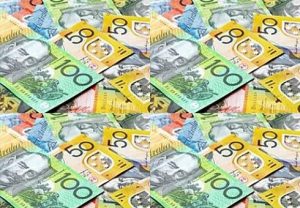Australian Dollar holds ground
25 October 2016 by News DeskAustralian Dollar and Pound had slipped again by Tuesday morning as markets tested the waters of risky currencies.
 Australian Dollar has seen demand for higher-yielding currencies fluctuate thus far this week, but erratic and volatile risk patterns are only likely to worsen as November’s US Presidential election approaches, according to currency specialists TorFX
Australian Dollar has seen demand for higher-yielding currencies fluctuate thus far this week, but erratic and volatile risk patterns are only likely to worsen as November’s US Presidential election approaches, according to currency specialists TorFX
The Australian Dollar has been weakened by Fed rate hike hawks but strengthened by Fed doves.
On Tuesday morning, the Australian Dollar appeared to be the risk-currency of choice for markets.
Investors are likely to continue firming on the Australian Dollar throughout the day, readjusting their positions ahead of Wednesday’s key session which sees the publication of Australia’s Q3 inflation.
New Zealand Dollar (NZD) – The Pound to New Zealand Dollar exchange rate saw similar movement to GBP AUD throughout Monday’s session, but GBP NZD trended above the week’s opening levels on Tuesday morning.
US rate hike bets are expected to remain a driving force behind New Zealand Dollar exchange rate movement as the week continues.
Australian Dollar holds ground
Pound Sterling (GBP) – The Pound trended limply for most of Monday’s trade session, and as a result was easily picked up in the cross-flows of other major currencies.
The day’s sole UK ecostats, CBI’s October orders report, disappointed with trends total orders coming in at -17. Business optimism recovered from -47 to -8. This low-influence report was completely swept over by investors however.
While Sterling recovered from its worst levels against many currencies last week, strength in rival currencies as well as new concerning Brexit news could see Sterling fall back towards its lows. The Pound has ultimately been able to hold its ground since markets reopened after the weekend, but still remains well below October’s opening levels in many cases.
US Dollar (USD) – The Pound to US Dollar exchange rate slipped slightly from the week’s opening levels throughout Monday trade, but Sterling did a fine job of holding its ground later in the day despite optimistic US ecostats and Fed rate hike bets driving ‘Greenback’ support.
Markit’s preliminary October Manufacturing PMI for the US came in above expectations. Expected by some to score similarly to September’s disappointingly low 51.5 result, US manufacturing was instead on track to score a healthier 53.2, the figure revealed.
Other factors keeping the US Dollar strong in the new week include bets that the Federal Reserve will hike interest rates in December. On Monday, multiple Fed hawks spoke up on the likelihood of a rate hike in 2016, leaving December’s meeting the most likely suspect. However, St. Louis Fed President James Bullard indicated that low interest rates were likely to remain long term, which may have weighed slightly on US Dollar demand during early Tuesday trade.
Euro (EUR) – The Pound to Euro exchange rate slipped slightly on Monday, but was largely able to hold near the week’s opening levels despite a slew of strong Eurozone data.
Markit’s preliminary October Eurozone PMI came in well above expectations in many prints, adding to market hopes that Eurozone economic activity was settling higher. Among the most notable prints were the French manufacturing score, which finally escaped contraction and beat expectations of 50 to score 51.3. German services also impressed after September’s highly disappointing score of 50.9 – the print beat expectations of a rise to 51.5, coming in at 54.1.
Overall Eurozone PMI beat expectations, with manufacturing improving from 52.6 to 53.3, services climbing from 52.2 to 53.5, and the composite score jumping from 52.6 to 53.7.
Despite the optimistic report, interest in the single currency remained low following last week’s European Central Bank (ECB) meeting, which hinted to markets that an extension to quantitative easing could be possible in December.
Canadian Dollar (CAD) – The Pound to Canadian Dollar exchange rate briefly touched new two-week-highs during Monday’s session before the Canadian Dollar surged. However, after comments from Bank of Canada (BOC) Governor Stephen Poloz shook Canadian markets, GBP CAD returned to trending near the week’s opening levels.
GBP CAD volatility occurred as markets misinterpreted Poloz’ statement that the bank would wait 18 months before taking action. Initial belief that this would mean no changes to monetary policy during this time led to a brief but strong Canadian Dollar rally. After Poloz clarified that his comments were in reference to the output gap, the ‘Loonie’ sank and GBP CAD recovered.
Demand for the Canadian Dollar remained weak otherwise, as oil prices continued to slip on fading hopes for a fully successful OPEC oil output cap.
Disclaimer: This update is provided by TorFX, a leading foreign exchange broker, its content is authorised for reuse by affiliates.
Learn more about the Australian Dollar – Contact TorFX: Get A Quote
Want to live and work Down Under? Click here for expert help: Skilled Migration to Australia
Want to get a job Down Under? Click here for expert help: How to Get a Job in Australia
Click here for expert help with travel visas: Travel Visas to Australia
Click here for tourist information about Australia: Visit Australia


